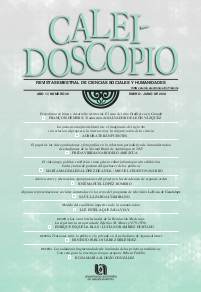The role of videotapes and photographs in the journalistic coverage of the demonstration of students of the Normal Rural of Ayotzinapa in 2011
DOI:
https://doi.org/10.33064/30crscsh518Keywords:
news frames, event-driven news, human rights, social protest, rural studentsAbstract
In this article, the role of videographic evidence in media coverage in which social protest was criminalized is examined. The analyzed event took place in Chilpancingo state of Guerrero, Mexico– in December, 2011. Students from the Normal Rural School of Ayotzinapa and agents from different police corporations were involved. To carry out this examination, the concept of “frame” in communication is reviewed, as well as the context in which this case developed. Also, the frames in communication before and after the release of the previously mentioned evidence are explained. Finally, the political elite’s consensus is discussed as an other contextual factor.Downloads
Metrics
Downloads
Published
How to Cite
Issue
Section
License
Licencia Creative Commons Atribución-NoComercial-CompartirIgual 4.0 Internacional
El lector es libre de compartir o adaptar el material en cualquier medio o formato bajo las condiciones siguientes: (a) debe reconocer adecuadamente la autoría, proporcionar un enlace a la licencia e indicar si se han realizado cambios; (b) no puede utilizar el material para una finalidad comercial y (c) si remezcla, transforma o crea a partir del material, deberá difundir sus contribuciones bajo la misma licencia que el original.
Resumen de la licencia
https://creativecommons.org/licenses/by-nc-sa/4.0/deed.es_ES
Texto completo de la licencia
https://creativecommons.org/licenses/by-nc-sa/4.0/legalcode
Cada autor es responsable del contenido de su artículo. En el caso de un texto colectivo, el primer autor asume la responsabilidad intelectual de los resultados del proceso editorial; los autores son responsables de obtener la licencia de autor para reproducir materiales gráficos o fotográficos que pertenecen a terceros.
Los autores asumen plena responsabilidad en el caso de falsificación de datos o falta de autenticidad en la investigación. Se comprometen, también, a no reutilizar trabajos ya publicados, total o parcialmente, para presentarlos en otra publicación.
Estas condiciones aplican tanto a la versión impresa como a la versión electrónica de la revista.

























